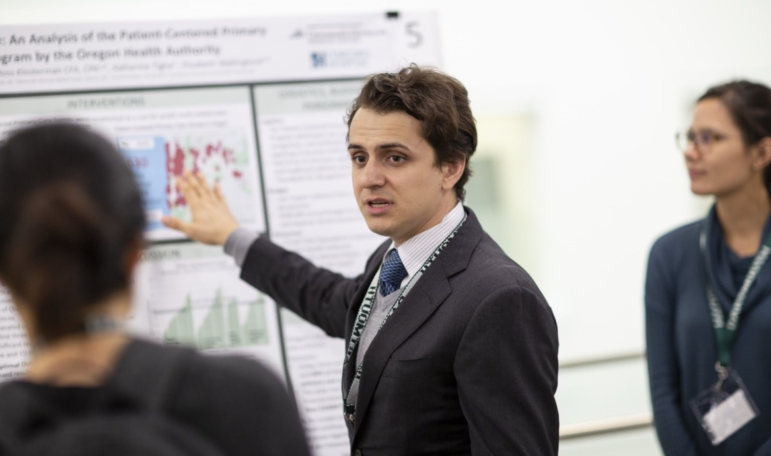The newest member of the Lown Institute/Right Care Alliance team is public health intern Bruce Jobse. He is a current Master of Public Health candidate at the Dartmouth Institute for Health Policy and Clinical Practice, where he is also a research analyst working in imaging overuse.
“My desire to see a new health care system started only after I had become employed in health care and saw the many difficulties and disarray of the hospital system,” said Bruce. “I had, like so many other Americans, thought it was an opaque, expensive system fraught with red tape, and yet still trusted that it fundamentally worked. I was incorrect.”
In a guest blog, Bruce shares a story about how even when clinicians and patients believe they are doing “everything right,” misunderstandings and lack of trust can still make things go wrong.
I was antsy to do something, to help, to make a difference in medicine. It was 2012, and I had just graduated from college. I had spent the past four years learning how the health care system operated and how people understood “illness” socially. Still, I was frustrated by the theory and talk, I needed to do something myself on ground-level to improve care. I wound up in the orthopedics department at a nearby Boston hospital, working to translate clinical interactions and track data on departmental metrics. It was nice, but if I wanted to improve care, I had to do more.
The patient was dressed in his street clothes, clearly impatient to wrap up his last presurgical appointment, as I handed him a laminated sheet covering the ‘Dos and Don’ts’ of his last week before his procedure. We didn’t often get the chance to work with the city’s rough sleepers, whose health care needs were often more pressing than the services offered by the department, so I was excited to help, to do what I thought was ‘real’ health care. I explained to him – in both English and Portuguese – to avoid eating anything or taking any nonprescribed medication leading up to the procedure and emphasized any deviance from this plan could result in the surgery being delayed or outright cancelled.
I had seen few patients get such a massive, multilevel surgery even with quality health care insurance, so the fact that a “charity case” could get such support from the hospital and staff was nothing short of incredible. He left, repeating our mantras and crystal clear on the appointment date. I left with renewed faith in the system, feeling that the best way to help patients was as a provider. The idea that the system was imbalanced and incapable of helping people must simply be “sour grapes” from disgruntled employees, I thought. When the patient returned, all would be well.
The patient returned; all was not well. He had adhered to every guideline–except he had found illicit narcotics to use before the surgery. When he was admitted, his only response was that he had been lied to by providers and hospitals before and did not want to go through with the surgery if he could feel the pain. Anesthesia blocked the surgery from occurring, and I did not see the patient at the clinic again for almost six months.
I had a long time to reflect on that moment. He had done everything “correctly” according to his own experiences, his own interactions with the health care system. The system itself had done everything “correctly” to make sure he understood and could follow its steps to ensure a safe and successful surgery. If both groups – to their own understandings – were correct and the problem remained, then there was something wrong with how the groups interacted, how they were built, that was at the heart of the issue.
In a single moment I changed from thinking all of health care’s problems could be solved on an interpersonal, clinical level to thinking about ways to improve outcomes, financing, and the system overall. I am still looking for those answers, but I now see that group outreach and research are steps to an improved, more equitable health care system regardless of demography and background.
